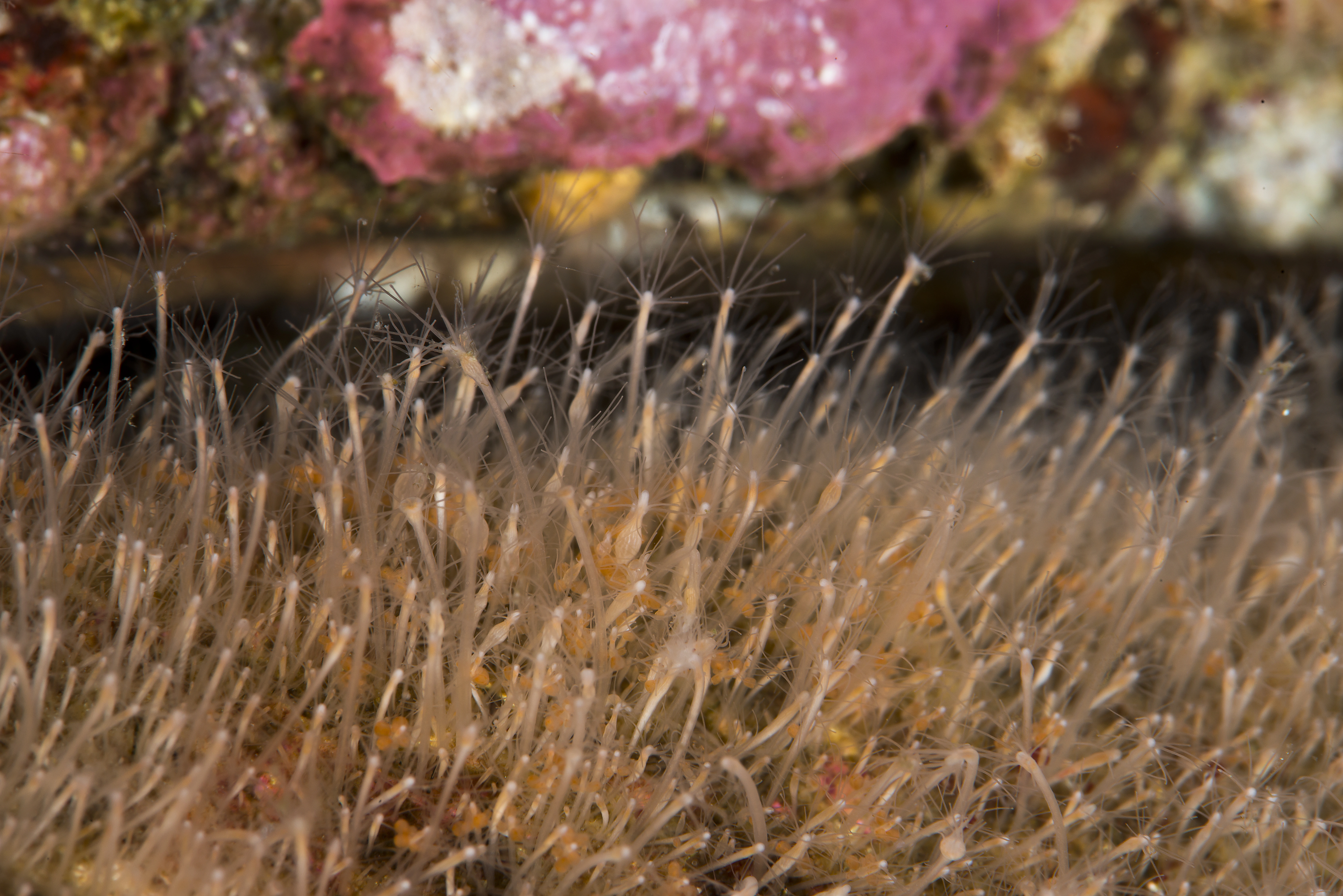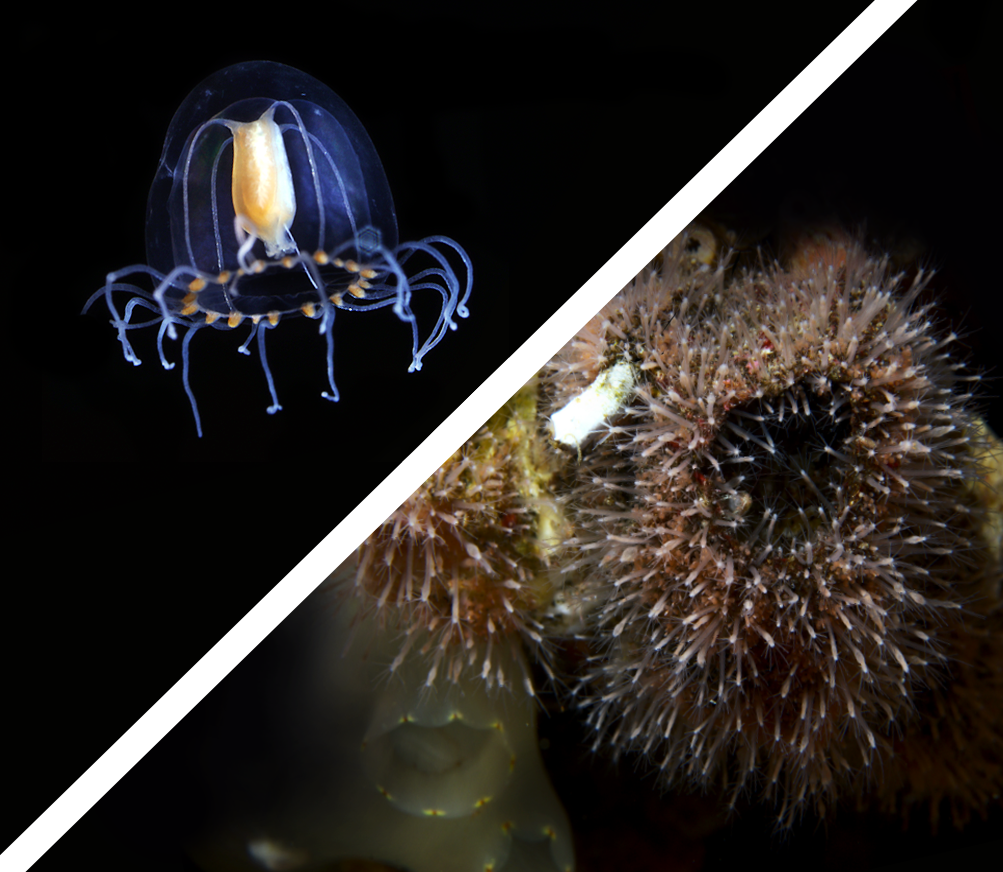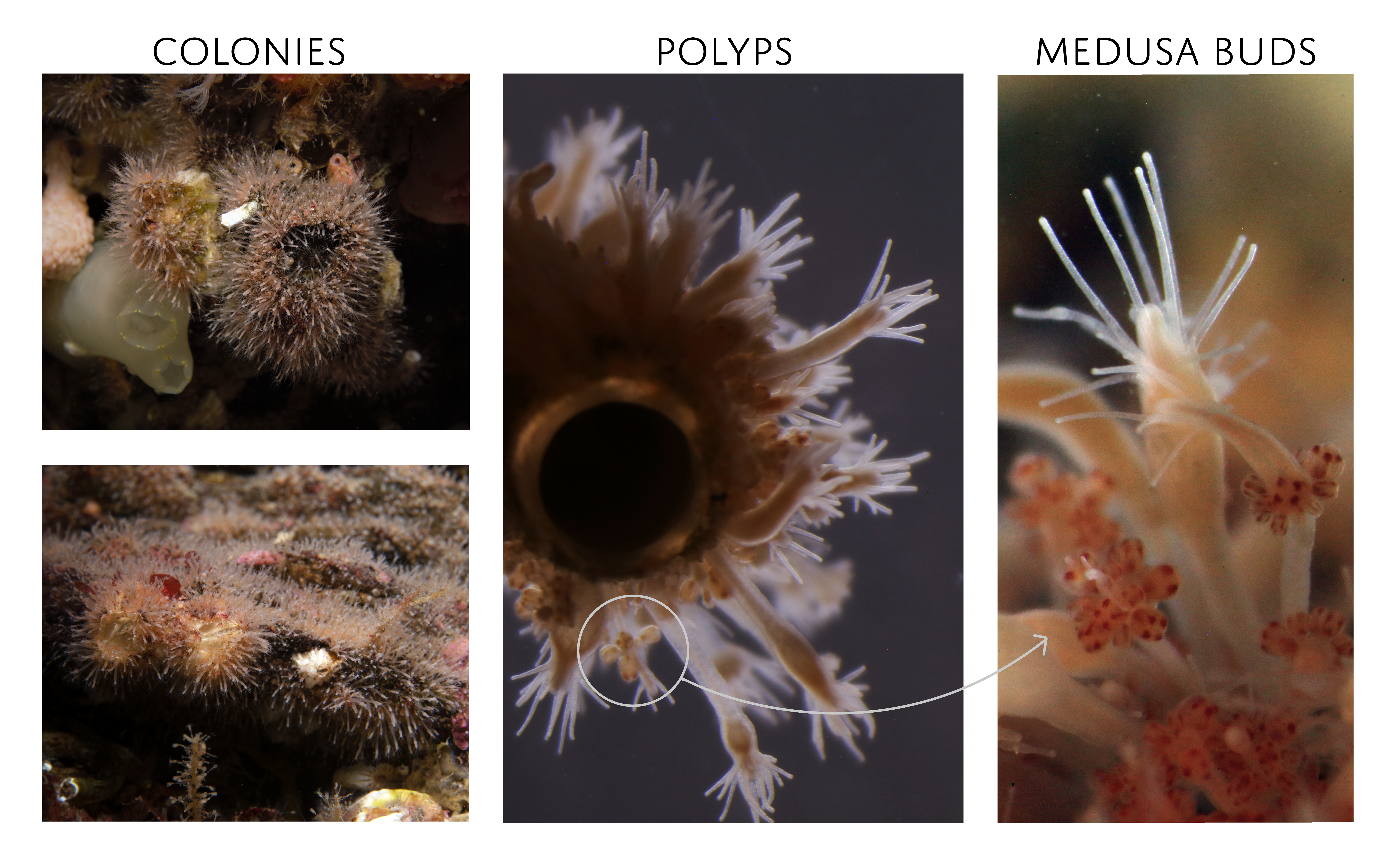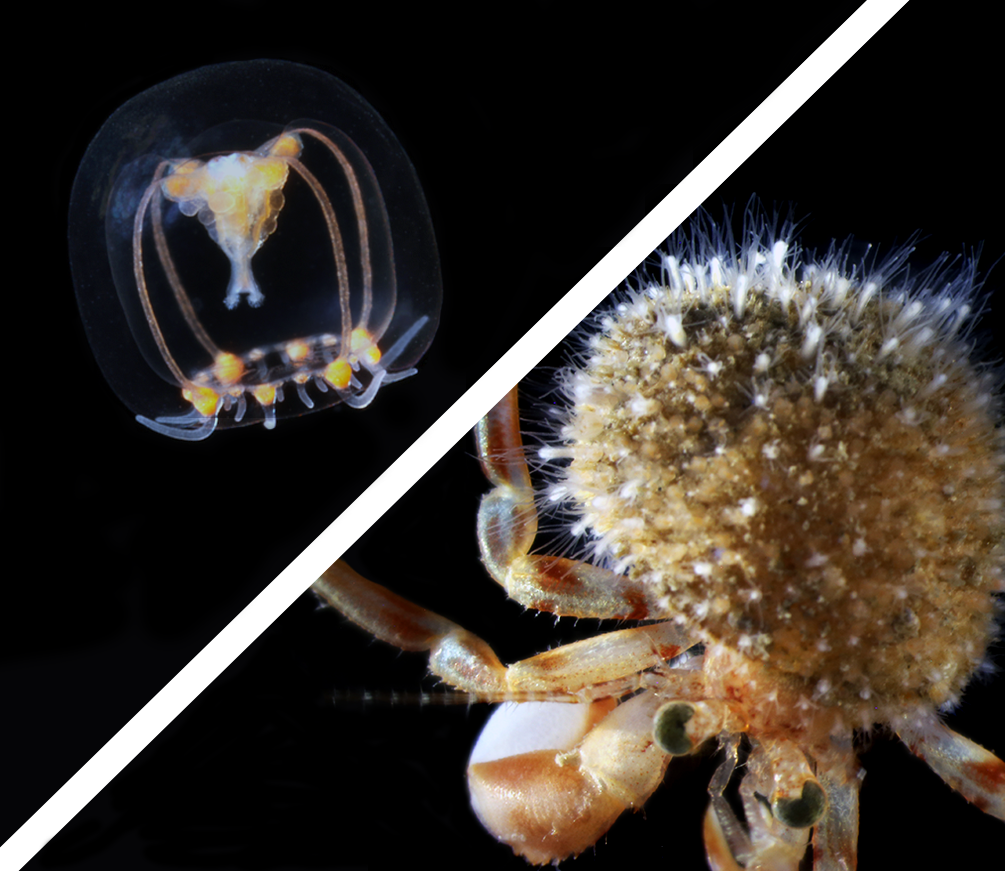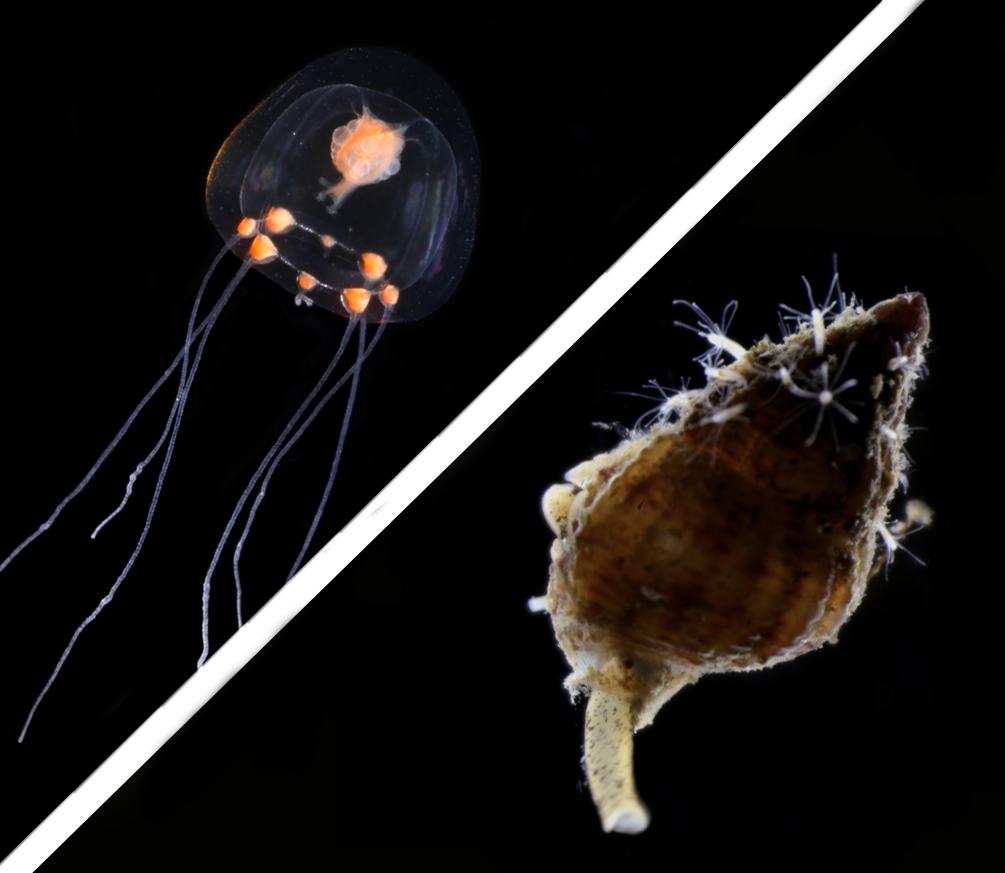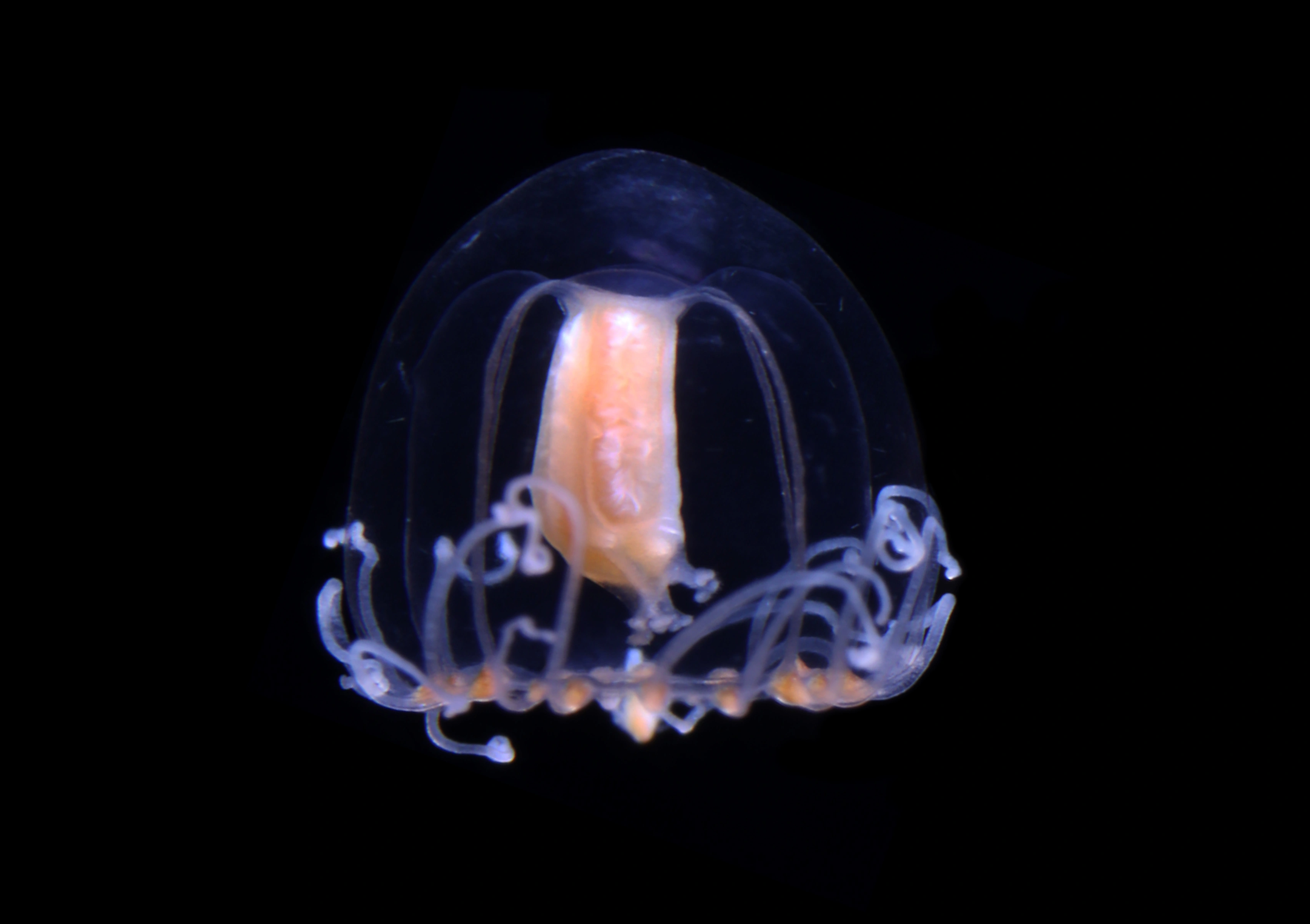Podocoryna borealis
The colonies of P. borealis often grow on non-living substrates such as rocks.
This is a relatively common species which is more often observed as a hydromedusa than as a polyp colony. The hydroids grow on different substrates including non-moving objects like polychaete tubes and barnacles, while the hydromedusae occur in surface waters. Unlike any other Podocoryna species in Norway, the oral arms of the hydromedusae of P. borealis are each carrying two clusters of stinging cells.
- Innhold
- Identification of hydroids
- Identification of hydromedusae
- Look-alikes
- Biology, ecology and behavior
- Distribution
Hydromedusa (left) and hydroid colony (right) life stages.
Identification of hydroids
The colonies of this species have feeding polyps (gastrozooids), reproductive polyps (gonozooids), and defensive polyps (dactylozooids), although the dactylozooids may be absent depending on the substrate the colony is growing on. The gastrozooids vary in shape and are usually 4–5 mm high, but can reach over 10 mm when fully extended, which makes them larger than the gastrozooids of the other Podocoryna species found in Norway. The gastrozooids have 10–13 tentacles. The gonozooids are smaller compared to the gastrozooids and usually have less tentacles (up to 10). Some colonies have spines, and when these are present they are small, slender and delicate. Young colonies or colonies exposed to stress usually lack gonozooids and are not identifiable to species.
Different views of the polyp stage of Podocoryna borealis.
Identification of hydromedusae
Adult hydromedusae are 4–5 mm high and have a diameter of approximately 4 mm. When fully mature, each hydromedusa has 16–30 tentacles, all of which are similar in structure and length. The mouth has four lips, each ending in two small clusters of stinging cells. Young medusae have only 8 tentacles when they are liberated.
Adult medusa of Podocoryna borealis, showing the oral arms that end in two clusters of stinging cells (circle).
Look-alikes
Two other species of Podocoryna (P. areolata and P. carnea) are found in Norwegian waters, but the hydromedusae of both species have lips that end in only one cluster of stinging cells, unlike P. borealis. In addition, mature hydromedusae of P. carnea have 8 tentacles, much fewer than the approximately 30 tentacles of P. borealis.
Reproductive colonies of P. borealis differ from reproductive colonies of P. areolata because the medusa buds in P. borealis have 8 tentacles or tentacles stumps, while the medusa buds of P. areolata have at least 16 tentacles or tentacle stumps right before liberation. In addition, unlike P. borealis, some colonies of P. areolata will have their spines clustered in groups, although this does not always occur.
Substrate preference may give some indication of the identity of a colony of Podocoryna, but it should not be used alone as a character for identification. In any case, out of the three Norwegian species of Podocoryna, P. borealis is the only one that often grows on non-mobile substrates. The hydroid colonies of P. borealis are indistinguishable from those of P. carnea.
Biology, ecology and behavior
The colonies of P. borealis grow on various substrates, including several non-moving objects such as polychaete tubes and barnacles, as well as mollusc shells (Turritella, Aporrhais, Colus, Neptunea, Buccinum) inhabited by living snails or hermit crabs, and the carapace of some crab species (Inachus, Macropodia). The recorded depth range for the hydroid colonies is 0–100 m. The hydromedusae are more commonly found near the surface in coastal waters, and in Norway they are present from spring to autumn.
The hydromedusae of P. borealis are present from spring to autumn in Norway.
Distribution
The hydroids of P. borealis have rarely been recorded in Norway, while the observations of the hydromedusae are more common and range from the Skagerrak in the South to Finnmark in the North. It has also been found in neighboring Swedish waters, as well as in the North Sea, Great Britain, Iceland, and in the north-east coast of the USA.
References
Hosia A & Båmstedt U (2007). Seasonal changes in the gelatinous zooplankton community and hydromedusa abundances in Korsfjord and Fanafjord, western Norway. Marine Ecology Progress Series 352: 113–127.
Kramp PL (1959). The Hydromedusae of the Atlantic ocean and adjacent waters. Dana-Report No. 46. 279 pp.
Schuchert P (2008). The European athecate hydroids and their medusae (Hydrozoa, Cnidaria): Filifera Part 3. Revue suisse de Zoologie 115(2):221–302.
Schuchert P (2012). North-West European athecate hydroids and their medusae: keys and notes for the identification of the species. Field Studies Council. Synopsis of the British Fauna (New Series) No. 59. 364 pp.
